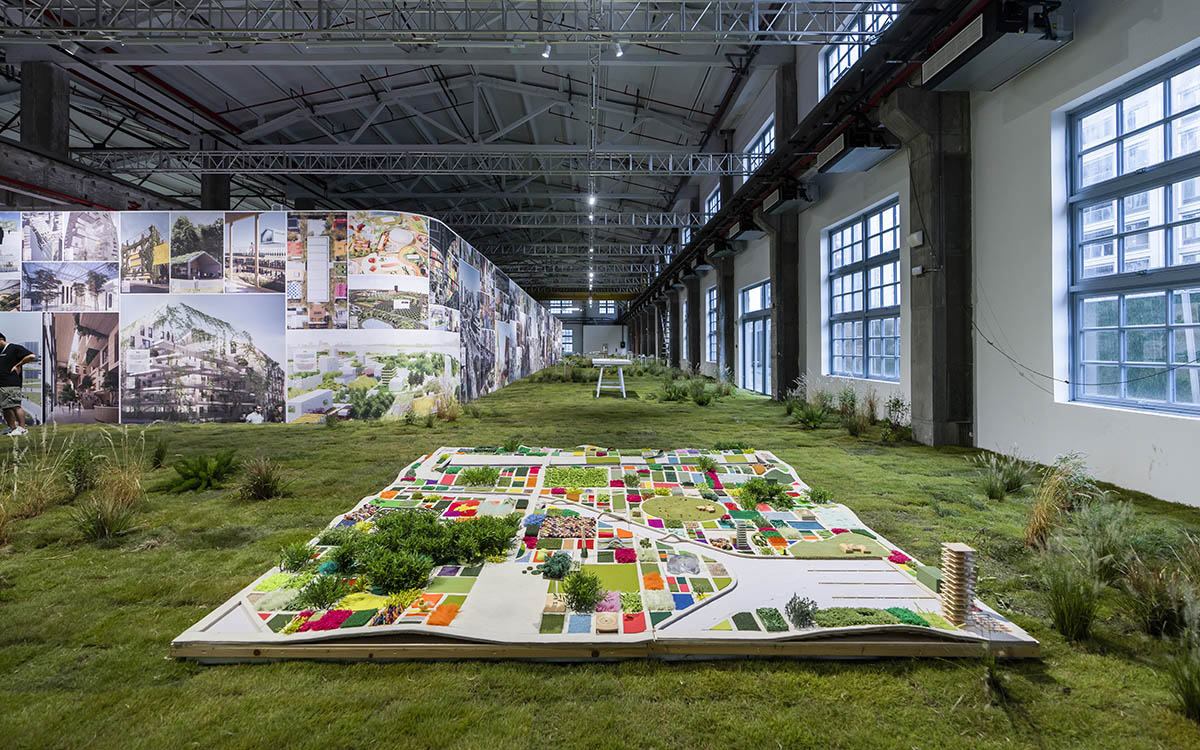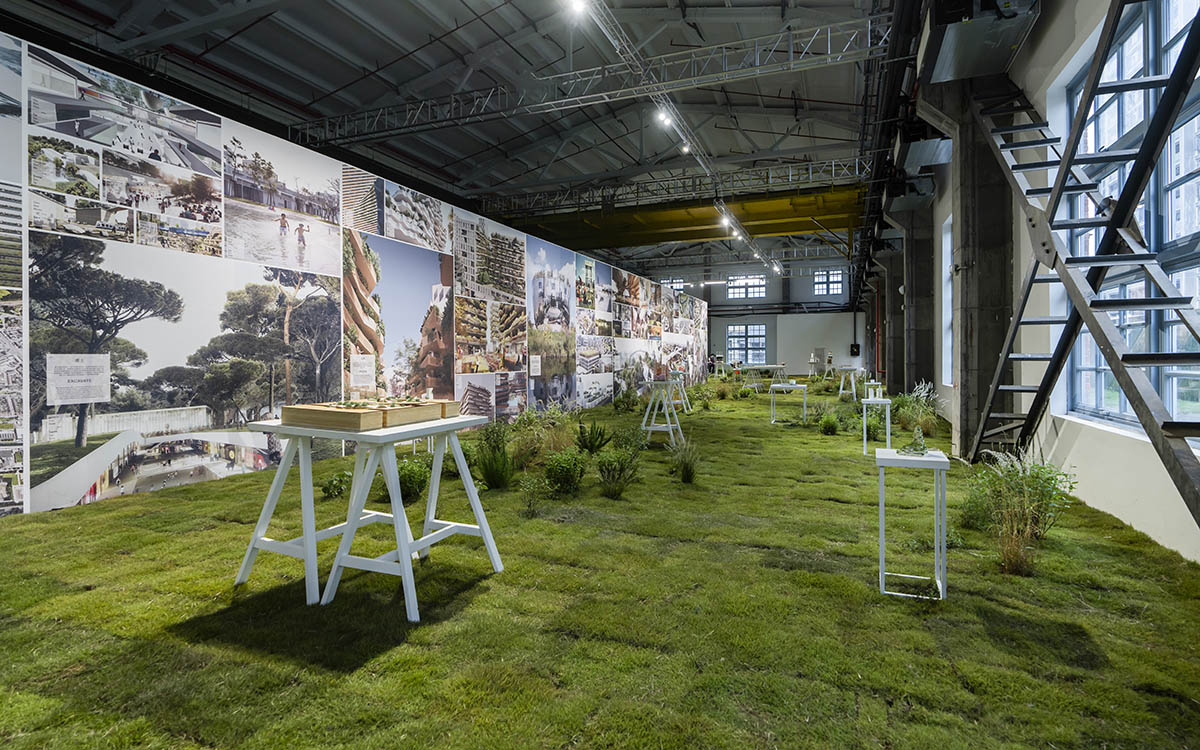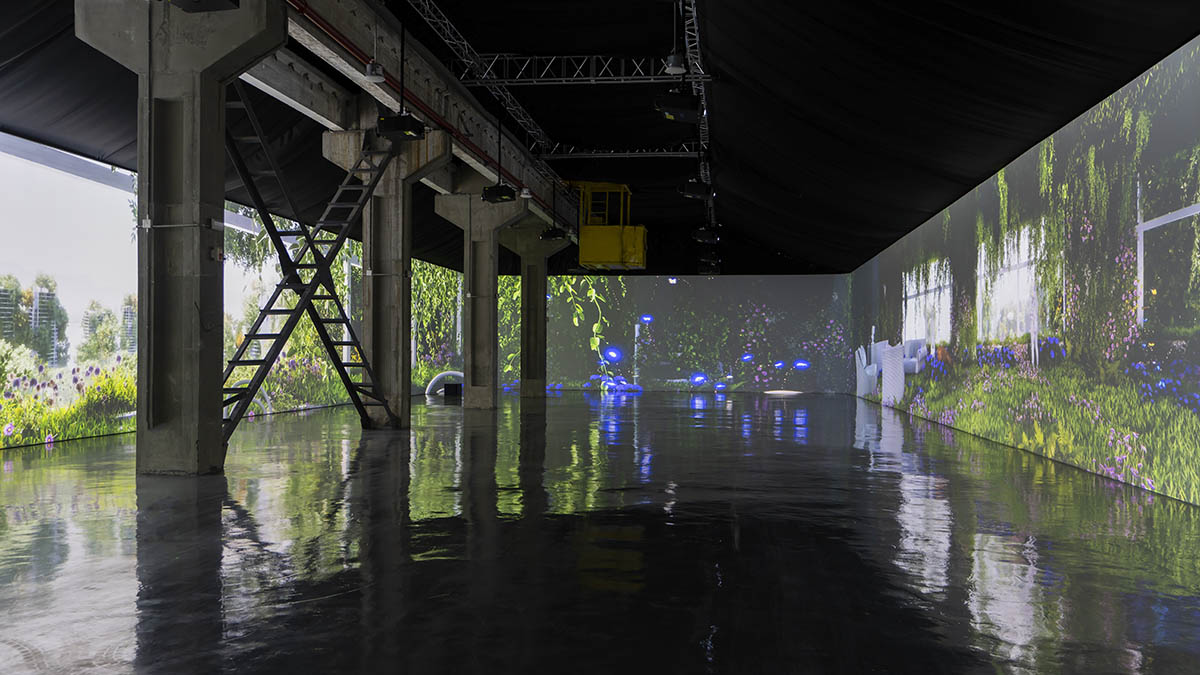Submitted by WA Contents
MVRDV and The Why Factory open exhibition in Hangzhou, imagining plant-covered and integrated cities
China Architecture News - Sep 25, 2023 - 15:46 2824 views

MVRDV and The Why Factory have opened an exhibition in Hangzhou, imagining the world as plant-covered and integrated cities.
Called The Green Factory, the exhibition is centered the idea of "welcome to the green city: a world of cities covered and made by forests and plants" at the O2 Museum in Hangzhou, China on 19 September.
The Green Factory exhibition will be on show until 31 December, 2023 at the O2 Museum. The exhibition was opened with the participation of Winy Maas, co-founder of MVRDV, and an exhibition forum, called Creating a Sustainable Future.

The exhibition examines MVRDV’s work through the frame of greening, underpinned and honed by MVRDV co-founder Winy Maas' academic think-tank The Why Factory’s "The Green Dip" research.
Presented in a greenish floor, the show mixes the rigorous investigation of the academic think-tank and the pragmatic action of an architectural practice – reinforced by the immersive power of a living green landscape that permeates the entire exhibition, even inside the building itself.

The exhibition presents the work of The Why Factory, the think-tank established at TU Delft by MVRDV founding partner Winy Maas, which provides greater depth and context through their “The Green Dip” research.
Investigating the possibilities and effects of a radical greening of our cities, Hangzhou, Singapore, Dubai, Paris, and New York are spectacularly reimagined, as these metropolises serving tens of millions of people daily become thriving green havens.

The research delves into the context that makes this greening necessary – the global challenges we face and the urgency required to confront them – as well as the results that doing so would achieve.
It also presents "The Greenmaker", a software concept that provides a step-by-step manual to integrate plants into any surface of a building, with consideration of the biome in which the building is located.

"Tackling challenges presented in the spheres of architecture, urbanism, and the world-at-large is core to the work of both MVRDV and The Why Factory, and no challenge is more pressing than designing solutions that alleviate stressors on our environment and climate," said MVRDV founding partner Winy Maas.
"In our 30 years as a practice we have persistently sought to add more greenery to cityscapes to enhance our wellbeing through nature, to increase biodiversity, and to mitigate climate impacts."
"The time has come to scale up. With this exhibition, we hope to inspire others to join this movement," Maas added.

The exhibition space is surrounded by an array of hundreds of MVRDV’s greening projects, identifying 26 ways greenery can be designed into both individual buildings and urban landscapes, concluding with an overview calculating the total green area included in the proposals, and effects such as the carbon storage potential of all their greenery.

Symbolising our ability to create and recreate the natural world, a park has been created on the floor of the former factory, which spills outside to the plaza, becoming part of the programming of surrounding buildings and available to the public day and night.
Planted with a mix of grasses, ferns, flowers, and mosses in a thin layer of soil, project models of a variety of scales are positioned throughout the space, creating the effect of a city on a micro scale, and allowing us to believe what can be possible.











Video courtesy of MVRDV
The Green Factory has opened to the public on September 19 at the O2 Museum, Hangzhou, China - located at Building 5, Wulin Constellation, Gongshu District, Hangzhou.
MVRDV completed a geology-inspired sustainable tower in San Francisco's Mission Rock and first residents started to move in the housing complex. Moroever, the firm built a demountable office and laboratory in the heart of Amsterdam Science Park, in which over 90 per cent of the building's materials can be recycled and reused.
Maas previosly spoke to World Architecture Community on the mission of The Why Factory in an exclusive interview.
"The Why Factory offers a 'publication machinery' where somehow the things become more public and we don’t throw away all the work normally done in the universities," Maas said, adding that "95% of all the student works in all universities are not visible, and they are completely thrown away - they are not public and they are all individual."
MVRDV was established in 1993 in Rotterdam, The Netherlands by Winy Maas, Jacob van Rijs and Nathalie de Vries.
All images courtesy of MVRDV.
> via MVRDV
